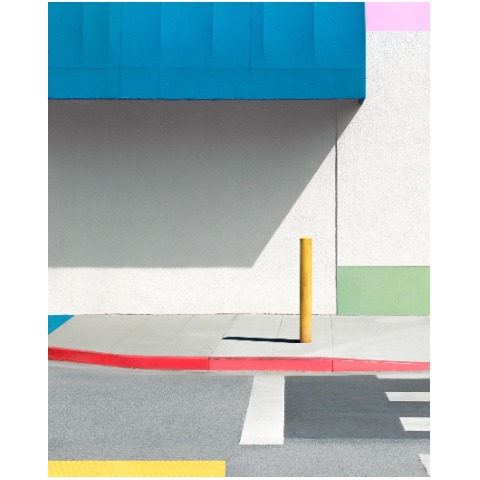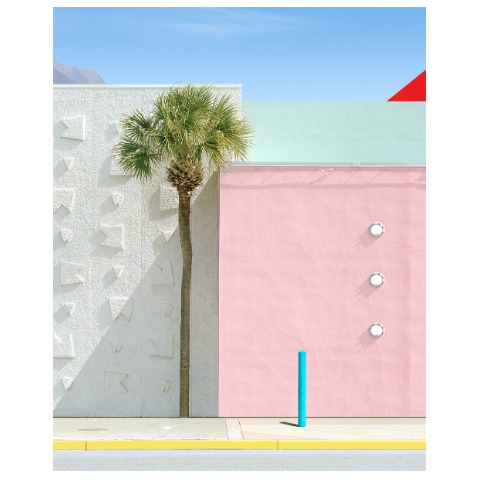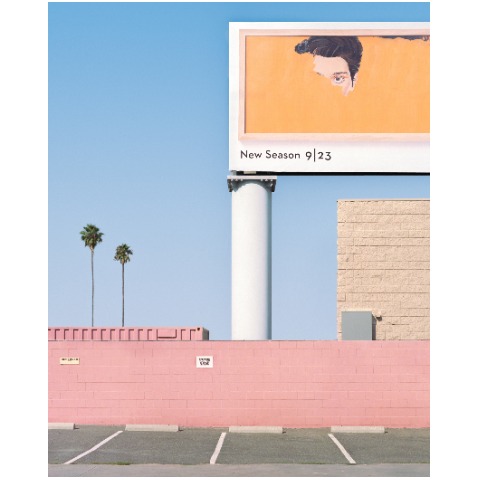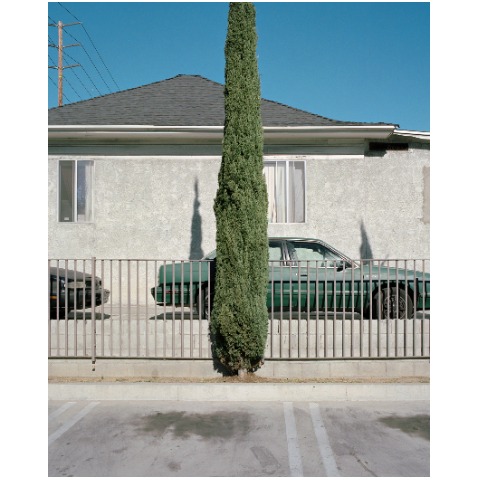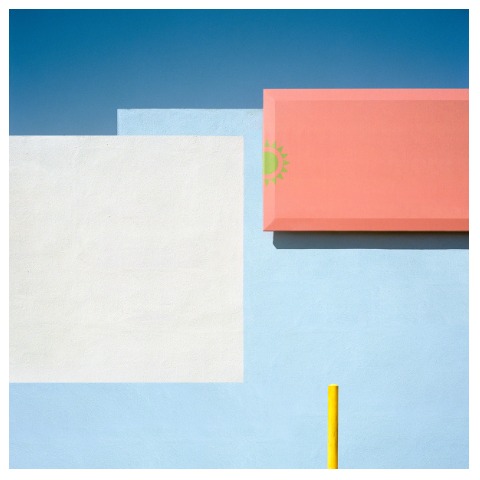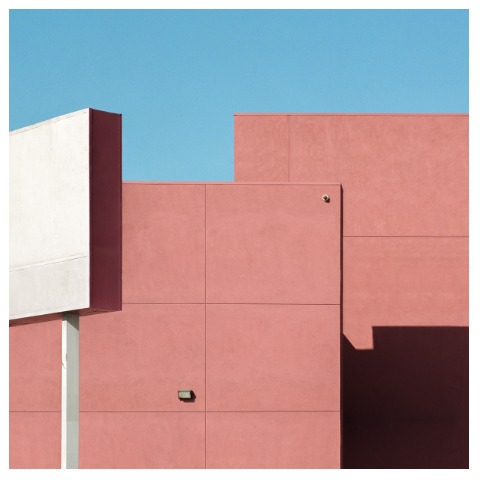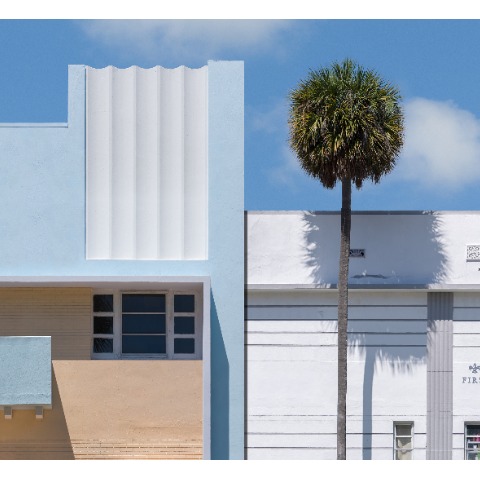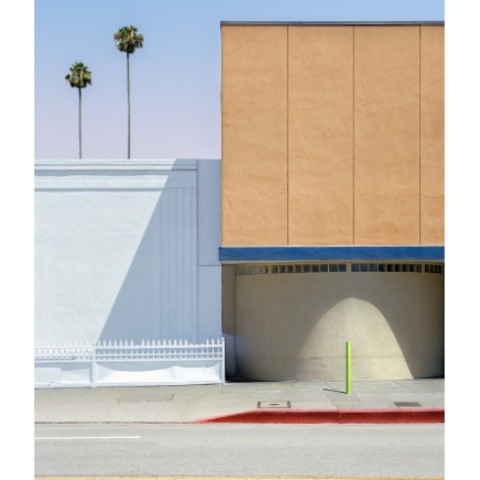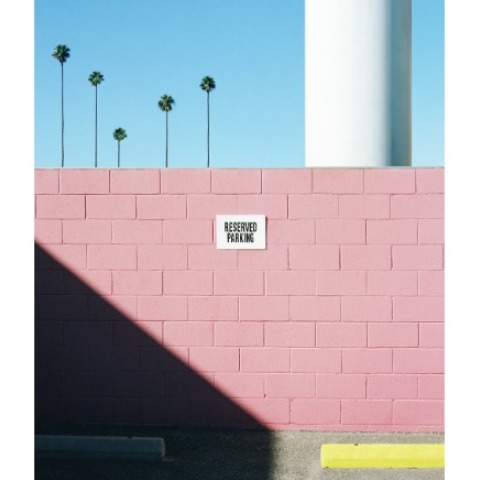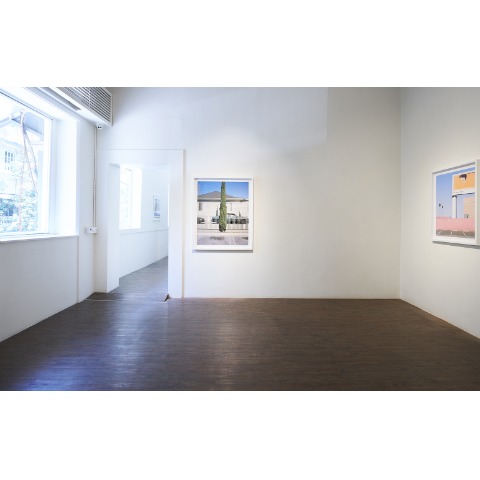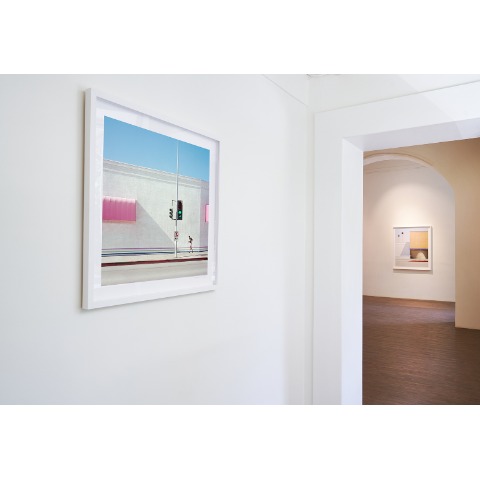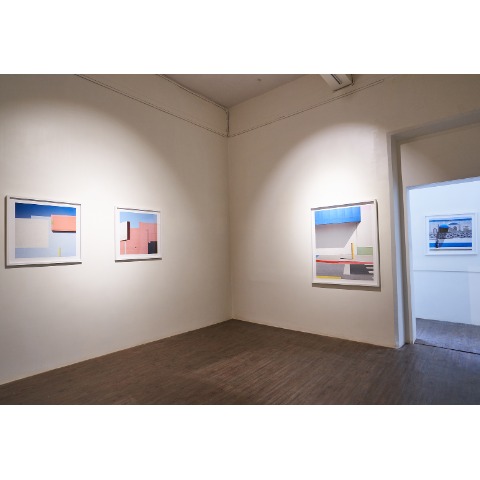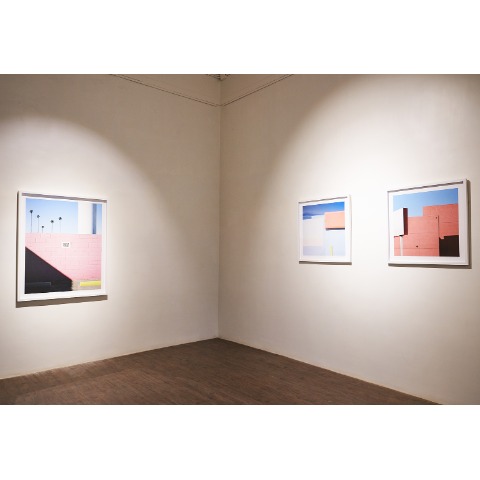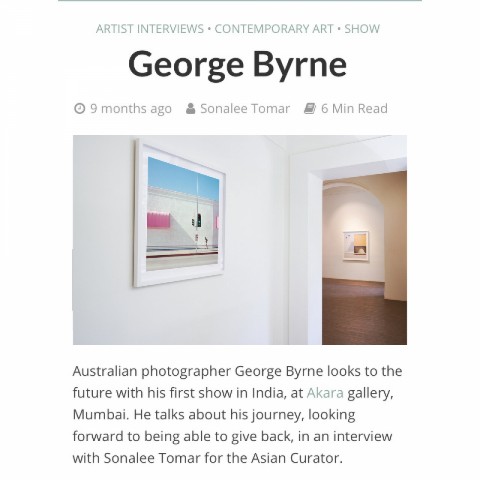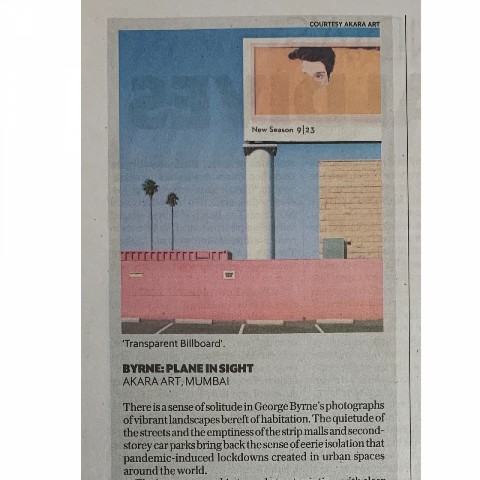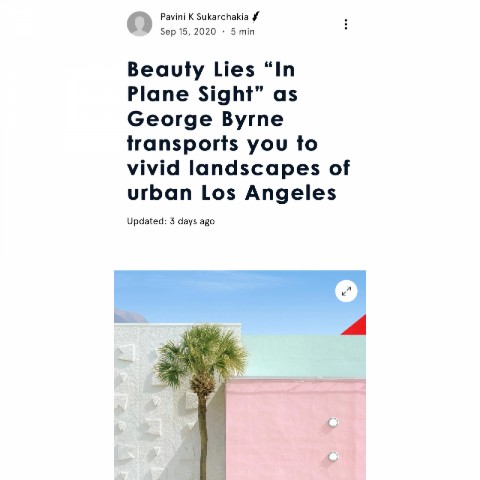
BYRNE IN PLANE SIGHT: GEORGE BYRNE
September 10 - October 17 , 2020
There is someone stalking the streets, strip malls, and second-story car parks of the greater Los Angeles area. At times, it would appear that this mysterious figure is going by foot?—?unaware, evidently, that this is no way to travel in these parts. The city this stranger inhabits is a second - hand city, one already well known through the internet, movies and art. Even at its most unglamorous it appears, for them, charged with energy and allusion, giving way any moment to fantasy. The individual in question is the subject of photographer George Byrne’s extraordinary work. Byrne was born and raised near Sydney, Australia, about as far out of town as one can get. A large part of his earlier oeuvre consists of images of New South Wales, where he received his conservatory degree from the Sydney College of the Arts in 2001 and first came into contact with the work of David Hockney, Ed Ruscha, and a whole cavalcade of West Coast artists who more or less invented L.A. in the artistic imagination.The subjectivity that inhabits Byrne’s work is unquestionably an outgrowth of his own cultural consciousness. But the effect of his whole corpus, including the Australian images and a few forays into Miami, is to conjure a very particular variety of viewing Self: a mind at play in a singular, twenty-first-century urban landscape, seeing it all through a highly specialized lens.
Born in 1976, Byrne is a generational cusper for whom digital media is basically reflexive, yet still strange enough to be interesting. That much accounts for his techniques, as well as his objective: roaming the streetscape, the artist collects fragmentary visions, opportunistic snapshots of the urban scene captured in exquisite high-definition (and usually in direct sunlight; returning to his studio and to his computer, he then laboriously sifts through these sharp, contrast-heavy images, and choosing elements from these image he starts to meddle, using photographic software to cut, paste, re-color, and edit the final image.
Byrne creates photographs that are indexes of modern visual culture, embracing the image-obsessed tumult of the Online Age and translating it into superb artistry. Byrne’s work transforms us into something like an obsessive flaneur prowling an unreal, unpeopled streetscape, full of confounding and often misleading information. Byrne has begun reducing the city to its material quintessence.
We have seen these things before, of course, but that is precisely what gives the work its unsettling undertow, its “Post Truth,” as Byrne titled a previous exhibition, disclosing a deeper truth about the cities we inhabit and how we inhabit them.
